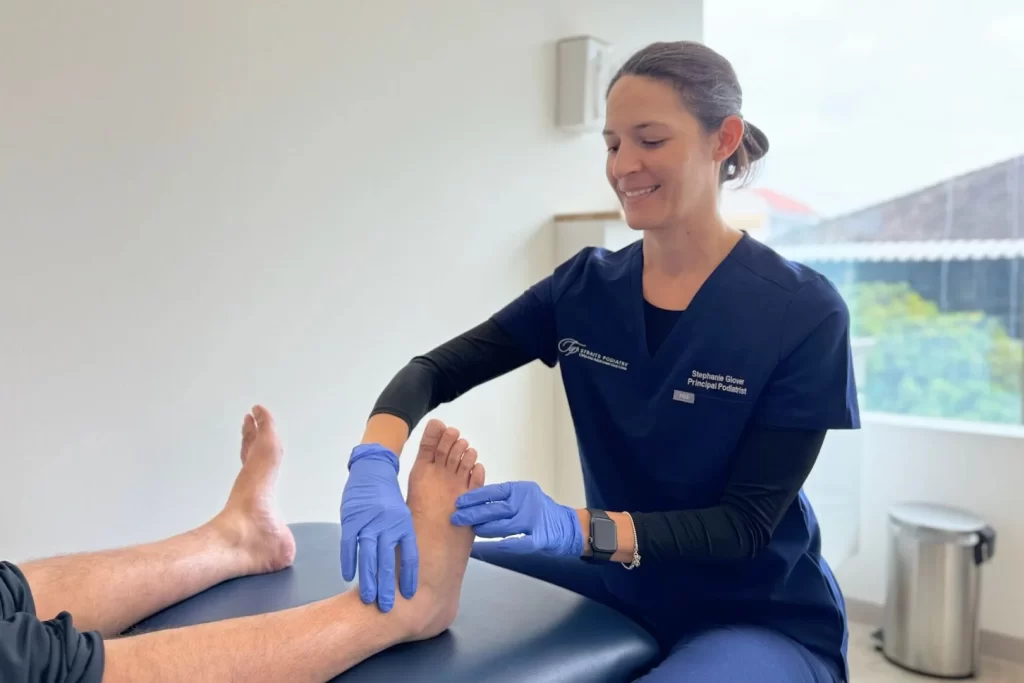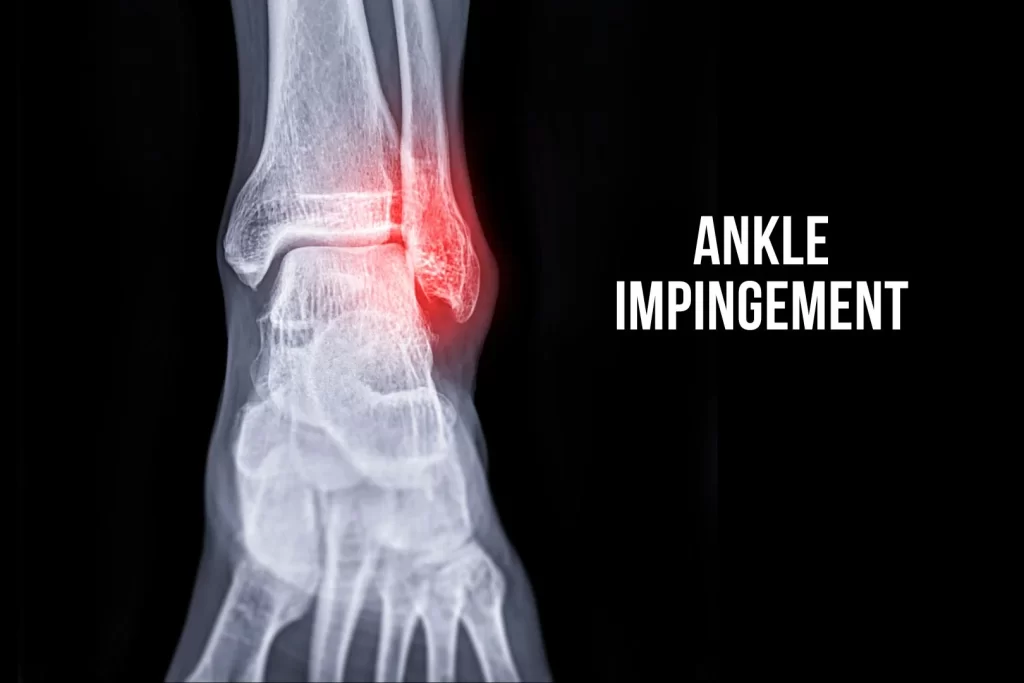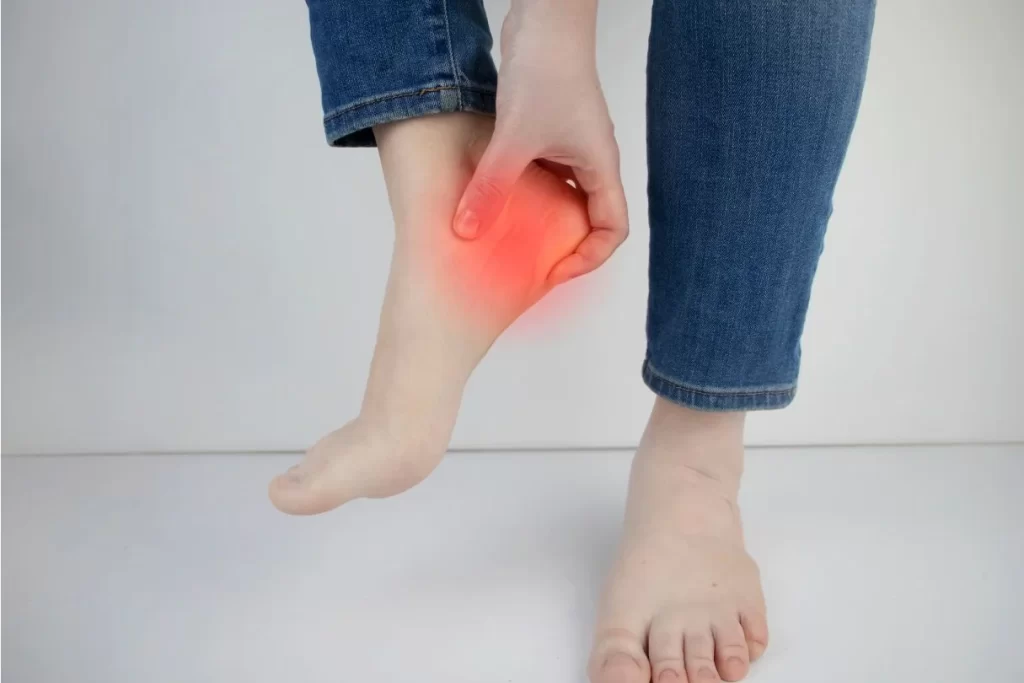Causes of Ankle Impingement
Repetitive Stress
Previous Injuries
A past history of ankle injuries can result in scar formation and chronic inflammation around the ankle. These scars and inflamed tissues often get compressed during movements, resulting in ankle impingement. The most common injuries associated with ankle impingement are ankle sprains and posterior tibial tendinitis.
Anatomical Variation or Abnormal Bone Growth
Need Help? See Our Podiatrist Today
Common Symptoms of Ankle Impingement
- Pain or discomfort in the front or sides of the ankle joint, often worse with physical activity
- Swelling and tenderness around the affected area
- Stiffness or reduced ankle joint range of motion
- Clicking or catching sensations within the ankle joint during movement

Treatment Options for Ankle Impingement in Singapore
Conservative Measures
Orthotic Devices
Custom orthotic inserts or ankle-foot orthotics are good options for controlling ankle joint motions and preventing excessive foot pronation or supination. They can also provide support and stability to the ankle joint, reducing the risk of impingement.
Conditions that can be caused by hallux rigidus include:
Shockwave Therapy
Shockwave therapy uses acoustic sound waves to trigger a natural healing response in the body. It has been shown to provide pain relief and increase ankle mobility in ankle injuries. However, shockwave therapy can be uncomfortable during the session and may require several sessions to show improvement.
Corticosteroid Injections
In cases that do not respond to a conservative approach, your medical professional may consider an injection to reduce pain and inflammation in the ankle joint. Although this may provide relief, the effects may be temporary. The condition can recur once the effect of the injections wears off.
Surgical Intervention
Podiatry Clinic for Ankle Impingement Management
If you’re experiencing ankle pain or discomfort, don’t let ankle impingement limit your lifestyle. Our team of experienced podiatrists specialises in managing a wide range of foot and ankle conditions, including ankle impingement. Contact our podiatrist today to schedule a consultation and take the first step towards finding relief and restoring your ankle mobility.
Search
You May Also Like
Do You Have A Question? Ask Us...
Search
Do You Have A Question? Ask Us...
You May Also like
Categories
Categories
- Ankle (4)
- Diabetic Foot (7)
- Feet (5)
- Knee (5)
- Paediatric Lower (5)
- Soft Tissue (3)
- Uncategorized (60)




